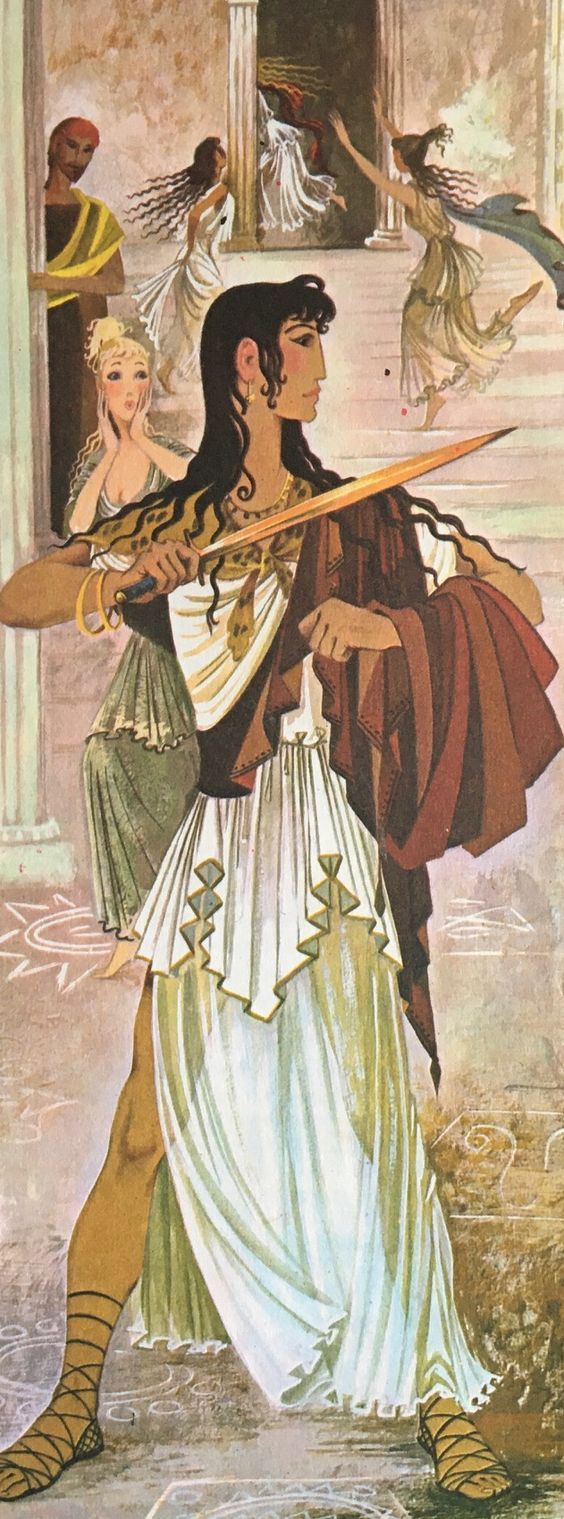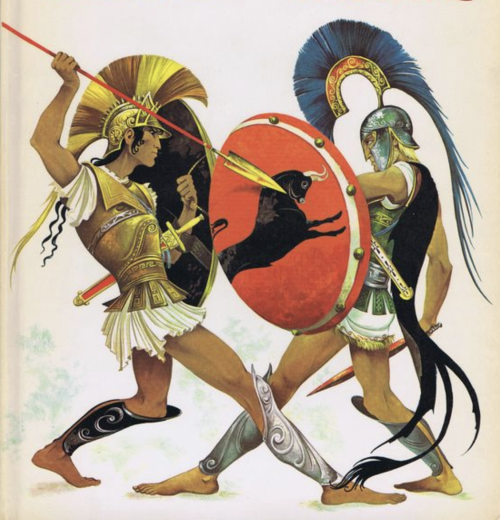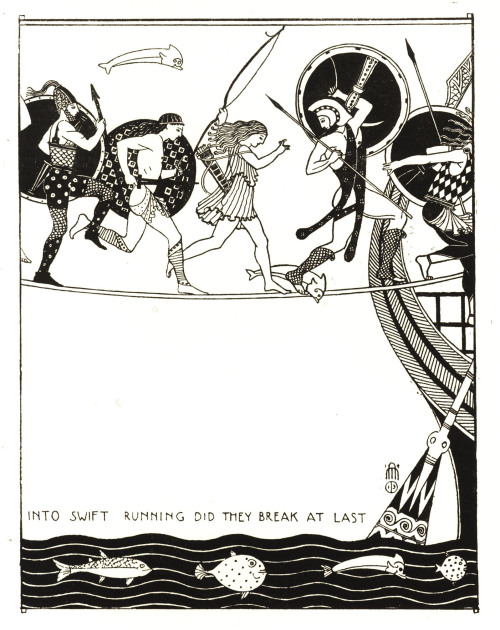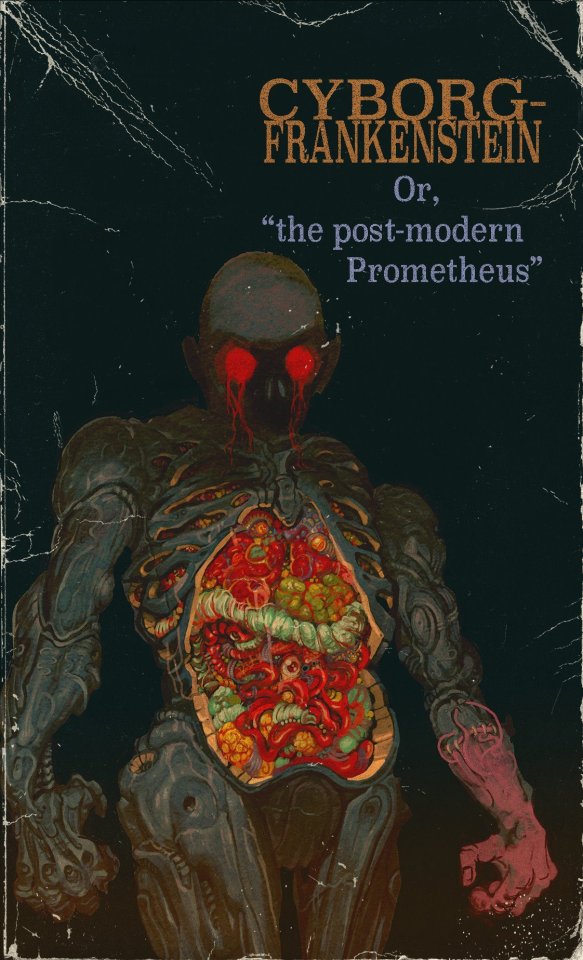“Lend It To Us And Wipe Away Our Tears.”





“Lend it to us and wipe away our tears.”
More Posts from Phaespxria and Others






Scenes from Homer by Janet & Anne Grahame Johnstone
Speaking of how Troy 2004 has personally offended me:
They took sandpaper and went to town on Hector. Smoothed out all his imperfections because how can good man also be bad man sometimes oh no my brain can't deal with that.
Also they didn't make him nearly as scary as he should be. Hector in the iliad is the. Scariest. The achaeans are terrified of him. Like he's the guy that walks on the battlefield and people run for their lives. He can lift boulders. He gets his ribcage smashed and gets back up like ten minutes later (granted, that's apollo, but in the god-less universe of troy they could've used it to make him even scarier) He doesn't go home all clean, he goes home and talks to his wife and holds his son while covered in gore. It's stressed that nobody but Achilles can beat him. He nearly burns the ships. He boasts and commits hybris after killing Patroclus.
Hector is the unbeatable war machine that makes mistakes sometimes, that morphs into a loving, smiling dad when he sees his son. The unbeatable war machine that's keeping an entire city safe, that gets scared and runs for his life when he knows he's in actual danger. That in the second-to-final moment has to be tricked into bravery, to stand and fight, so he has the chance at the final moment to recover from that and be supremely brave again and run straight to death, with his mind set on glory. Because he's extremely human right to the end. And his pride is as huge as his feeling of duty and love.
Also they took away that great scene where he's like "fuck your bird signs" he was such a legend for that in the iliad.

i'm sorry (not) to people who know me irl










Staff Pick of the Week
My staff pick is The Life and Death of Jason, a Metrical Romance by William Morris with decorations by Maxwell Armfield. This edition was published by Dodd, Mead and Company in New York in 1917.
William Morris was born on March 24, 1834 in Walthamstow, near London, England. He was known for being a being a leader in the Arts & Crafts movement, a socialist activist, and for founding the Kelmscott Press in 1891 which helped kick start the contemporary fine-press movement. Morris was also a poet and author, and his poem The Life and Death of Jason was first published in 1867. It chronicles the exploits of the Greek mythological hero Jason, leader of the Argonauts, and his quest for the Golden Fleece. Morris was a follower of the Pre-Raphaelite Brotherhood, and worked closely with the artist Edward Burne-Jones who illustrated several Kelmscott Press books, including the 1895 edition of The Life and Death of Jason.
I chose this 1917 edition of The Life and Death of Jason, printed 21 years after the death of William Morris in 1896, because of Maxwell Armfield’s wonderful illustrations. Maxwell Armfield was a British artist and writer who was trained in Arts and Crafts principles. I first came across Armfield’s Jason early in my time at Special Collections when I worked as undergraduate assistant shelving books in the department. Now several years later and much wiser about William Morris’s lasting legacy, I really see the connection of this book has with earlier editions even though it is aesthetically very different. This is made clear in Maxwell Armfield’s “Note on the Drawings” which precedes the text:
“In the case of an epic, one feels, I think, that the important quality of the décor should be unity not so much with the ideas of the text as with the book as book, and unity also within itself.
This point of view must consider the embellishment not so much as illustration proceeding from the text as a continuation of the binding and page purposing to present the text to the eye; or as commentary on certain aspects of the matter not necessarily touched on at all by the author.”
This holistic approach to book design is very much in line with Morris’s principles, even if the illustrations are more modern in appearance than the Kelmscott Press’s medievalist aesthetic.
For an even deeper dive into Maxwell Armfield’s artistic interpretation of The Life and Death of Jason, I recommend the article: Illustrating Morris:The Work of ]essie King and Maxwell Armfield by Rosie Miles published for the Journal of William Morris Studies in 2004.
View more posts about William Morris.
–Sarah, Special Collections Graduate Intern

?????
almost a week of school left i am doing it for him.

A little reel :D got the go ahead to post it hehe

When I saw this picture, I knew I had to draw it with Hektor and Andromache, it's perfect for them~

When I saw this picture, I knew I had to draw it with Hektor and Andromache, it's perfect for them~

-
 todomeaburre liked this · 1 month ago
todomeaburre liked this · 1 month ago -
 naupactus liked this · 1 month ago
naupactus liked this · 1 month ago -
 villainii liked this · 1 month ago
villainii liked this · 1 month ago -
 cat-with-a-keyboard reblogged this · 1 month ago
cat-with-a-keyboard reblogged this · 1 month ago -
 userbailu reblogged this · 2 months ago
userbailu reblogged this · 2 months ago -
 seaburitto reblogged this · 2 months ago
seaburitto reblogged this · 2 months ago -
 seaburitto liked this · 2 months ago
seaburitto liked this · 2 months ago -
 viradahlen reblogged this · 2 months ago
viradahlen reblogged this · 2 months ago -
 viradahlen liked this · 2 months ago
viradahlen liked this · 2 months ago -
 theredfields reblogged this · 2 months ago
theredfields reblogged this · 2 months ago -
 bard-of-cat reblogged this · 2 months ago
bard-of-cat reblogged this · 2 months ago -
 lilassygrosellas reblogged this · 2 months ago
lilassygrosellas reblogged this · 2 months ago -
 the-one-the-fool liked this · 4 months ago
the-one-the-fool liked this · 4 months ago -
 rhubarbspring liked this · 4 months ago
rhubarbspring liked this · 4 months ago -
 khanger91 reblogged this · 4 months ago
khanger91 reblogged this · 4 months ago -
 khanger91 liked this · 4 months ago
khanger91 liked this · 4 months ago -
 rhubarbspring reblogged this · 4 months ago
rhubarbspring reblogged this · 4 months ago -
 the-spanish-1nquisition liked this · 4 months ago
the-spanish-1nquisition liked this · 4 months ago -
 cyclosma liked this · 4 months ago
cyclosma liked this · 4 months ago -
 fifthmiracleprayer reblogged this · 5 months ago
fifthmiracleprayer reblogged this · 5 months ago -
 fifthmiracleprayer liked this · 5 months ago
fifthmiracleprayer liked this · 5 months ago -
 mapsofnonexistentplaces reblogged this · 5 months ago
mapsofnonexistentplaces reblogged this · 5 months ago -
 yuujies liked this · 5 months ago
yuujies liked this · 5 months ago -
 gayotic-dumbass-energy liked this · 5 months ago
gayotic-dumbass-energy liked this · 5 months ago -
 jaykay667 reblogged this · 5 months ago
jaykay667 reblogged this · 5 months ago -
 jaykay667 liked this · 5 months ago
jaykay667 liked this · 5 months ago -
 weirdasshomo reblogged this · 5 months ago
weirdasshomo reblogged this · 5 months ago -
 weirdasshomo liked this · 5 months ago
weirdasshomo liked this · 5 months ago -
 jonlumia reblogged this · 5 months ago
jonlumia reblogged this · 5 months ago -
 nonbinaroo reblogged this · 5 months ago
nonbinaroo reblogged this · 5 months ago -
 nonbinaroo liked this · 5 months ago
nonbinaroo liked this · 5 months ago -
 octobaba reblogged this · 5 months ago
octobaba reblogged this · 5 months ago -
 jokseenkin reblogged this · 5 months ago
jokseenkin reblogged this · 5 months ago -
 knifetongues reblogged this · 5 months ago
knifetongues reblogged this · 5 months ago -
 basileiasmoon liked this · 5 months ago
basileiasmoon liked this · 5 months ago -
 antlered-vixen reblogged this · 5 months ago
antlered-vixen reblogged this · 5 months ago -
 festeringfreek liked this · 5 months ago
festeringfreek liked this · 5 months ago -
 huomenhaamu liked this · 5 months ago
huomenhaamu liked this · 5 months ago -
 omelettedufrottage reblogged this · 5 months ago
omelettedufrottage reblogged this · 5 months ago -
 nicerumors reblogged this · 5 months ago
nicerumors reblogged this · 5 months ago -
 sapphichymns reblogged this · 5 months ago
sapphichymns reblogged this · 5 months ago -
 annita89q8i6jph liked this · 6 months ago
annita89q8i6jph liked this · 6 months ago -
 jaxieus liked this · 7 months ago
jaxieus liked this · 7 months ago -
 satancult reblogged this · 7 months ago
satancult reblogged this · 7 months ago -
 vintagefrog liked this · 7 months ago
vintagefrog liked this · 7 months ago -
 innocentem reblogged this · 7 months ago
innocentem reblogged this · 7 months ago -
 crazy-8 liked this · 8 months ago
crazy-8 liked this · 8 months ago -
 frittomyssto liked this · 8 months ago
frittomyssto liked this · 8 months ago -
 amotleycrew liked this · 8 months ago
amotleycrew liked this · 8 months ago -
 xonference reblogged this · 8 months ago
xonference reblogged this · 8 months ago
